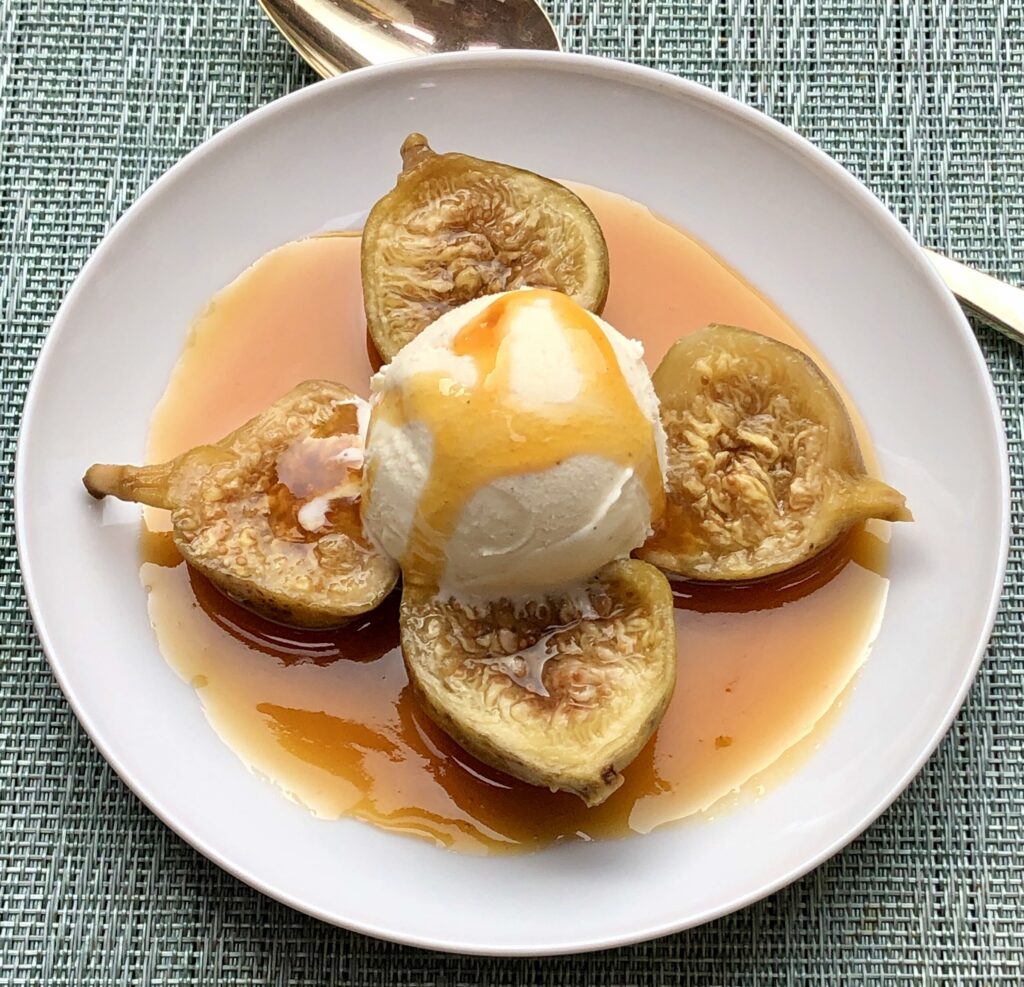
If you’ve ever thought of honey as just a sweet addition to your morning tea or as a topping for pancakes, think again! Honey has a surprising and delicious role in savory cooking. From adding depth and complexity to marinades and dressings, to balancing out flavors in savory dishes, honey brings a unique touch to the culinary world. So, whether you’re a seasoned chef looking to elevate your creations or an adventurous home cook looking to try something new, this article will take you on a journey from the busy hives of bees to the mouthwatering buffet of savory cooking. Get ready to discover the incredible versatility and flavor honey brings to the table!
Health Benefits of Honey
Antibacterial Properties
Honey has been known for its antibacterial properties for centuries. It contains an enzyme called glucose oxidase, which produces hydrogen peroxide when honey is diluted, thus providing natural antibacterial properties. This makes honey an excellent natural remedy for minor cuts and wounds. Additionally, studies have shown that honey can inhibit the growth of certain bacteria, making it effective in fighting infections.
Antioxidant Power
Honey is rich in antioxidants, which are beneficial compounds that help protect the body against cell damage from harmful free radicals. These antioxidants can help reduce the risk of chronic diseases such as heart disease and cancer. The darker the honey, the higher the antioxidant content. So, choosing darker varieties like buckwheat or manuka honey can provide even greater antioxidant benefits.
Digestive Aid
Honey has long been recognized for its ability to help with digestion. It contains enzymes that aid in the breakdown and absorption of food, making it easier on the digestive system. Honey can also help soothe the lining of the digestive tract and relieve digestive discomfort. Adding a spoonful of honey to warm water or herbal tea can provide relief from indigestion or acid reflux.
Reduced Allergic Reactions
Believe it or not, consuming local honey may help reduce allergic reactions. Local honey is made from the nectar of flowers in your specific area, so it may contain trace amounts of the pollen that triggers your allergies. By exposing yourself to these small amounts of pollen through local honey, you may build up a tolerance and reduce your sensitivity to allergens over time. However, it’s important to note that more research is needed to fully understand this potential benefit.
Honey as a Natural Sweetener Substitute
Lower Glycemic Index
Honey has a lower glycemic index compared to refined sugar, meaning it causes a slower and steadier increase in blood sugar levels. This quality makes it a favorable option for individuals who need to manage their blood sugar levels, such as those with diabetes. However, it’s still essential to consume honey in moderation, as it is still a form of sugar and can contribute to overall calorie intake.
Enhanced Flavor
One of the key advantages of using honey as a natural sweetener substitute is its unique flavor profile. Unlike refined sugar, which adds only sweetness, honey adds a depth of flavor that can enhance various dishes. The floral, fruity, or earthy notes of different types of honey can bring complexity to baked goods, sauces, and beverages, making them more enjoyable and memorable.
Improved Shelf Life
Honey has a remarkable ability to extend the shelf life of baked goods and other perishable items. Its natural characteristics, such as low moisture content and acidity, create an environment that inhibits the growth of bacteria and molds. By replacing sugar with honey in recipes, you can increase the freshness and overall lifespan of your culinary creations.

This image is property of debbeesbuzz.com.
Honey in Marinades and Glazes
Enhancing Flavor Profiles
When used in marinades and glazes, honey can take your dishes to the next level by enhancing their flavor profiles. It adds a touch of sweetness that balances out savory and tangy ingredients, creating a harmonious blend of flavors. The level of sweetness can be adjusted to suit your taste preference, allowing you to achieve the perfect balance of flavors in your marinades and glazes.
Adding Moisture and Tenderness
Honey acts as a natural tenderizer when used in marinades for meats and poultry. Its enzymes help break down proteins, resulting in more tender and juicy cuts of meat. Additionally, honey helps retain moisture during the cooking process, preventing dryness and improving the overall texture of the dish. Whether you’re grilling, roasting, or braising, adding honey to your marinades can make a noticeable difference in the tenderness of your meats.
Improving Caramelization
The natural sugars in honey caramelize beautifully when exposed to heat, creating a delicious golden-brown crust on meats and other grilled or roasted foods. This caramelization not only enhances the appearance of your dishes but also adds a delightful depth of flavor. The rich, slightly smoky notes imparted by the caramelized honey can elevate the taste of your favorite grilled chicken or glazed ribs.
Honey in Salad Dressings
Balancing Flavors
Salad dressings often require a touch of sweetness to balance the acidity of vinegar or the bitterness of greens. Honey serves as an excellent natural sweetener in dressings, allowing you to achieve a pleasant balance of flavors. Its nuanced taste complements a wide range of salad ingredients, from crisp vegetables to creamy cheeses, making each bite a delicious and well-rounded experience.
Creating Creamy Textures
Using honey in salad dressings can contribute to creamy textures without relying solely on mayonnaise or heavy cream. The natural viscosity of honey helps emulsify the dressing, resulting in a smooth and luscious consistency. Whether you’re drizzling the dressing over leafy greens or tossing it with a grain-based salad, honey adds a touch of luxuriousness that takes your salads to new heights.
Emulsifying Ingredients
One of the challenges in making homemade salad dressings is achieving a well-emulsified mixture. Honey acts as a natural emulsifier, helping bind together ingredients that would otherwise separate. From oil and vinegar to herbs and spices, honey ensures that your dressings stay blended and cohesive, ensuring consistent flavor distribution in every bite.

This image is property of Amazon.com.
Honey in Meat and Poultry Dishes
Tenderizing Abilities
When used as a marinade or glaze, honey has natural tenderizing abilities that can transform tough cuts of meat or poultry into succulent and tender masterpieces. The enzymes present in honey work to break down the proteins in the meat, resulting in a more tender texture. Whether you’re preparing a hearty steak or a roast chicken, incorporating honey into your marinades or glazes can make all the difference in achieving mouthwatering tenderness.
Creating Beautiful Outer Crusts
One of the culinary pleasures of cooking meat and poultry is the creation of a beautiful crust on the outside. Honey plays a crucial role in achieving this desirable caramelization and browning. When applied as a glaze or incorporated into a marinade, honey helps create a stunning outer layer on grilled or roasted meats, adding not only visual appeal but also a depth of flavor that enhances the overall taste experience.
Enhancing Sauces and Gravies
Honey can also be a secret ingredient in sauces and gravies, adding depth and complexity to the overall flavor profile. Its subtle sweetness works in harmony with savory ingredients, enhancing the overall taste without overpowering the dish. Whether you’re preparing a rich pan sauce for steak or a velvety gravy for roast turkey, a hint of honey can elevate your culinary creations to new heights of deliciousness.
Honey in Seafood and Fish Recipes
Balancing Richness
Seafood and fish dishes often benefit from a touch of sweetness to balance their inherent richness. Honey can provide this delicate sweetness, enhancing the flavors of seafood without overpowering them. From glazed salmon to honey-soy shrimp, incorporating honey into your seafood and fish recipes can create a balanced and nuanced flavor profile that is both satisfying and delightful.
Creating Glazes and Sauces
Honey is excellent for creating glazes and sauces that envelop seafood and fish with irresistible flavors. Its sticky consistency helps the glaze cling to the surface of the seafood, caramelizing during cooking and creating a delectable layer of sweetness. Whether you’re looking to add a tangy honey-mustard glaze to grilled prawns or a sweet and spicy sauce to pan-seared scallops, honey can take your seafood dishes to the next level of deliciousness.
Caramelizing Scallops and Shrimp
Caramelization adds a depth of flavor to seafood, and honey can be your secret weapon in achieving this culinary feat. Honey, when used in the cooking process, helps create a beautiful caramelized crust on the surface of scallops and shrimp, enhancing their natural sweetness. The result is a dish that showcases perfectly seared seafood with a delightful touch of sweetness that will leave you craving for more.

This image is property of images.squarespace-cdn.com.
Honey in Vegetable Dishes
Roasting and Glazing Root Vegetables
Honey pairs exceptionally well with root vegetables when it comes to roasting or glazing. The natural sugars in honey caramelize during the cooking process, transforming the vegetables into tender morsels with a delightful sweetness. Whether you’re roasting carrots, parsnips, or sweet potatoes, a drizzle of honey can help bring out their natural flavors and add a touch of decadence to your vegetable dishes.
Adding Sweetness to Savory Sauces
Vegetable dishes can benefit from a touch of sweetness to counterbalance their savory elements. Adding honey to savory sauces, such as tomato-based sauces or Asian-inspired stir-fry sauces, can bring a pleasant balance to the overall taste. The honey’s subtle sweetness blends seamlessly with the other ingredients, unlocking a harmonious blend of flavors that will leave you wanting for seconds.
Balancing Bitterness in Greens
While greens like kale, collard greens, or Brussels sprouts offer essential nutrients, they can sometimes have a bitter taste. Honey can act as a natural remedy to balance out this bitterness, making them more palatable and enjoyable. Drizzling a bit of honey over sautéed or roasted greens can transform them into a side dish that is both nutritious and delightfully flavorful.
Honey in Bakery and Bread Recipes
Adding Moisture to Batters
Honey’s natural humectant properties make it an excellent addition to batters in baking recipes. It helps retain moisture, resulting in baked goods that are moist and tender. Whether you’re making muffins, cakes, or quick breads, replacing part of the sugar with honey can lend a delightful texture and keep your baked creations fresh for longer.
Boosting Flavors in Cakes and Cookies
Honey is a versatile flavor enhancer, and its addition to cakes and cookies can amplify their taste profiles. It adds depth and complexity, making each bite a delightful experience. Whether you’re baking honey-infused spice cakes, chewy oatmeal cookies, or delicate honey butter cookies, incorporating honey into your bakery recipes can take them to new heights of deliciousness.
Enhancing Bread Texture
In bread baking, honey not only adds flavor but also contributes to the texture of the final product. Its natural sugars help promote a tender and moist crumb, resulting in bread that is soft and inviting. Additionally, honey can also contribute to the distinctive golden-brown crust that makes homemade bread irresistible. Whether you’re making sandwich bread or artisanal loaves, honey can be your secret ingredient for achieving bakery-quality results.

This image is property of www.sidewalkshoes.com.
Honey in Cheese and Charcuterie Pairings
Creating Sweet-Savory Combinations
In the world of cheese and charcuterie pairings, the combination of sweet and savory flavors is highly sought-after. Honey can play a crucial role in achieving this balance, complementing the richness and saltiness of various cheeses and cured meats. From drizzling honey over blue cheese or spreading it on a slice of prosciutto, these sweet-savory combinations create a symphony of flavors that excite the taste buds.
Balancing Richness
The natural sweetness of honey can help balance the richness of certain cheeses and charcuterie. The creamy, fatty texture of cheeses or the intense flavors of cured meats can be tempered by a touch of honey, creating a more balanced and enjoyable tasting experience. Whether you’re indulging in a platter of assorted cheeses or savoring thinly sliced salami, honey can add a touch of brightness that complements the richness of these delectable treats.
Enhancing Flavor Profiles
Honey has the ability to enhance the flavor profiles of both cheeses and charcuterie. Its unique taste and complexity can elevate the taste of milder cheeses, bringing out their subtleties. Similarly, when paired with cured meats, honey can bring out the nuances of their flavors, highlighting the craftsmanship and quality of the charcuterie. From creamy brie to aged cheddar, or from prosciutto to chorizo, honey can help unlock a world of exquisite flavors in your cheese and charcuterie pairings.
Conclusion
Honey is not just a sweetener; it’s a versatile ingredient that can elevate both sweet and savory dishes. Its health benefits, such as its antibacterial properties and antioxidant power, make it an excellent addition to any diet. Whether you’re using honey as a natural sweetener substitute, adding it to marinades and glazes, incorporating it into salad dressings, or exploring its potential in various culinary creations, the possibilities are endless. So, the next time you reach for an ingredient to enhance your cooking, consider the natural and flavorful magic of honey.

This image is property of i0.wp.com.